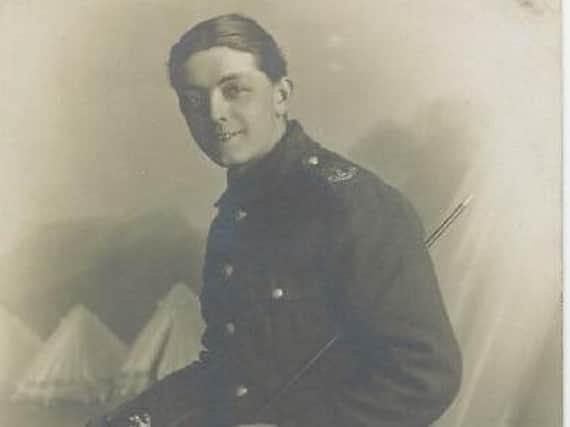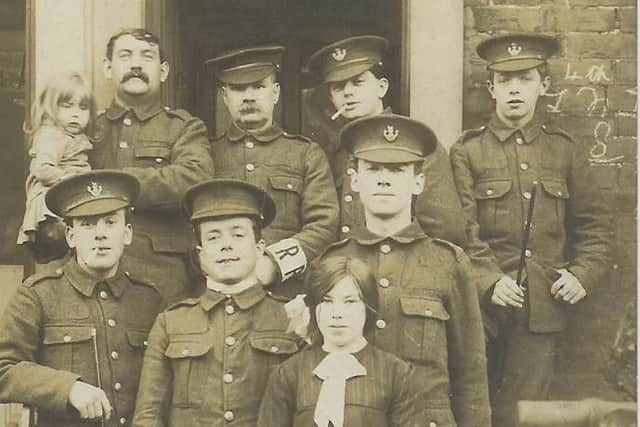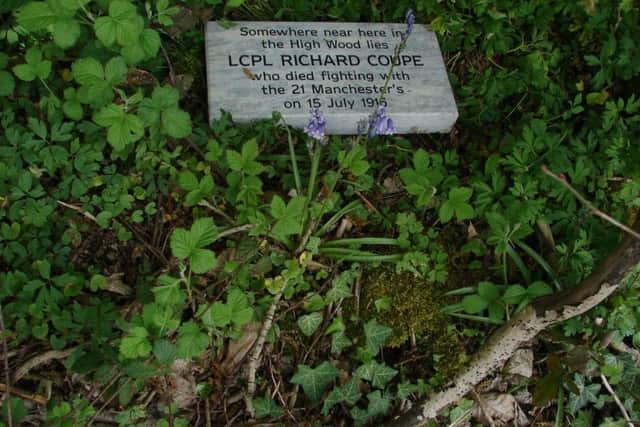Journey from America to the Some to trace the uncle who made ultimate sacrifice


Lance Corporal Richard Coupe of the Loyal North Lancashire Regiment (LNLR) was my great uncle. His older brothers, Frederick and Roger, also served in the LNLR.
My grandfather, Herbert Coupe, emigrated to the United States in the early 1920s. He subsequently named his two sons after his father (William, my uncle) and his brother (Richard, my father). My father named his two sons Richard (me) and William (my brother).
Advertisement
Hide AdAdvertisement
Hide AdThe High Wood – Bois des Fourcaux in French – is a beautifully peaceful place. The spring air was filled with dime-sized white petals falling from the flowers on the branches of the trees and the purple forget-me-nots were in bloom everywhere.


And the birds were singing the arrival of spring. The thick foliage on the ground in the High Wood covers the violence done to the earth by the shelling and the German trenches to the left.
Between July 1 and November 18,1916 the Battle of the Somme was the largest battle on the Western Front of the First World War One; more than 1m men were wounded or killed, making it one of the bloodiest battles in human history and in the end just a few square miles of territory changed hands.
April 2016, Strasbourg, France: “Well it came today,” my wife said as I entered the house, “and it is very heavy and I had to pay the postman an extra 30 euros postage,” she added.
Advertisement
Hide AdAdvertisement
Hide AdWhat happened to Lance Corporal Richard Coupe of the Loyal North Lancashire Regiment has been shrouded in mystery for almost 100 years and it is still not completely clear. I remember reading a copy of a newspaper article which says he was last seen wounded and the article pleaded for any information on him. The emotions behind the words was deeply moving and it was a little unnerving seeing my name listed as missing. His body was never recovered.


The newspaper article had a picture of a nice looking young man in uniform sitting on a stool, hat in his right hand, and a swagger stick tucked under his left arm with a mischievous smile on his face. The picture with tents in the background is obviously one of those staged by a photographer for soldiers and there are probably thousands of very similar pictures. I have one, but the background is a big American flag.
September 15, 1914: Lance Corporal Richard Coupe from 8 Beach Street, Preston enlisted in the Loyal North Lancashire Regiment (LNLR) and arrived in France on May 18, 1916 at the port of La Harve.
While attached to a training Battalion in June 1916, he was twice sent to the Causality Clearing Station due to a case of variocele (a swelling of the scrotum).
Advertisement
Hide AdAdvertisement
Hide AdSeptember 23, 1916: The British Government declares Richard was reported to be wounded and missing in action July 14-16 during the Battle of the Somme fighting with the 21st Manchester Regiment.


2014-16, Fairfax, Va: The British Government has scanned all of their records from WWI and made them available online. And anyone with a little determination, patience, and tenacity can find a lot of conflicting information.
July 1 1916: The 21st Manchester Regiment was badly hurt during the first few days of the Somme and Richard was attached to them almost directly from the hospital on July 9. The Regiment was scheduled to assault the High Wood on the morning of the July 15. The 21st Manchester Regiment failed to take High Wood that day and it wasn’t taken until September.
It is my brother’s intuition after poring over official service records and battle descriptions from diaries and books, some of them conflicting and confounding that my namesake, Richard Coupe, died here on the morning of July 15, 1916.
Advertisement
Hide AdAdvertisement
Hide AdThere is a family legend passed down through the generations that Richard’s father after the war went to visit the Manchester regiment, seeking information on what happened to his son. He found someone, so the story goes, who remembered Richard even though he was only with the Manchester Regiment for less than a week. As an engineer he was sent ahead of the attack on the High Woods by the local commander to find a path around a machine gun nest. However, an artillery barrage was scheduled at the same time as Richard’s reconnaissance. He was returning from the reconnaissance when he was wounded by the shelling and never seen again.


May 2016, the High Wood: And so it was that almost exactly 100 years after the Battle of the Somme my brother and I were driving around looking for the High Wood with our French friends Daniel and Michele in their beat-up old 1998 red Volvo with shocks not meant for a couple of big Americans.
This area of north west France is largely agricultural with gently rolling hills, and in May many fields are bright yellow with the canola blooming. Contrasted with the brown of freshly tilled fields and the luminescent green of winter wheat and dotted with stands of trees and the landscape is like a painting by Cézanne.
When the cute little French villages stop being cute and all of the buildings are made of an ugly red brick it was clear we had entered the battlefield. These villages were all destroyed during WWI and rebuilt after the war in a hurry and cheaply. As we drove along and looked out over the landscape there were always three, four or five military cemeteries in sight. Some beside the road, others set beside some woods, or in middle of a vast agricultural field. From a distance they looked like an ancient Roman or Greek ruins with columns, arches and walls still standing.
Advertisement
Hide AdAdvertisement
Hide AdIn the High Wood we placed the memorial stone my brother had made and shipped to me in France and I considered my great-uncle Richard. What if he had lived and emigrated to the US like my grandfather – could I now have 20 or 30 more American cousins? I shivered and felt them crowd around me. What was the point of his death? Was he a hero? One hundred years later Richard still speaks to us, reminding us of his sacrifice and his memory reminds us of the price of war, and implores us to do all we can to prevent it.